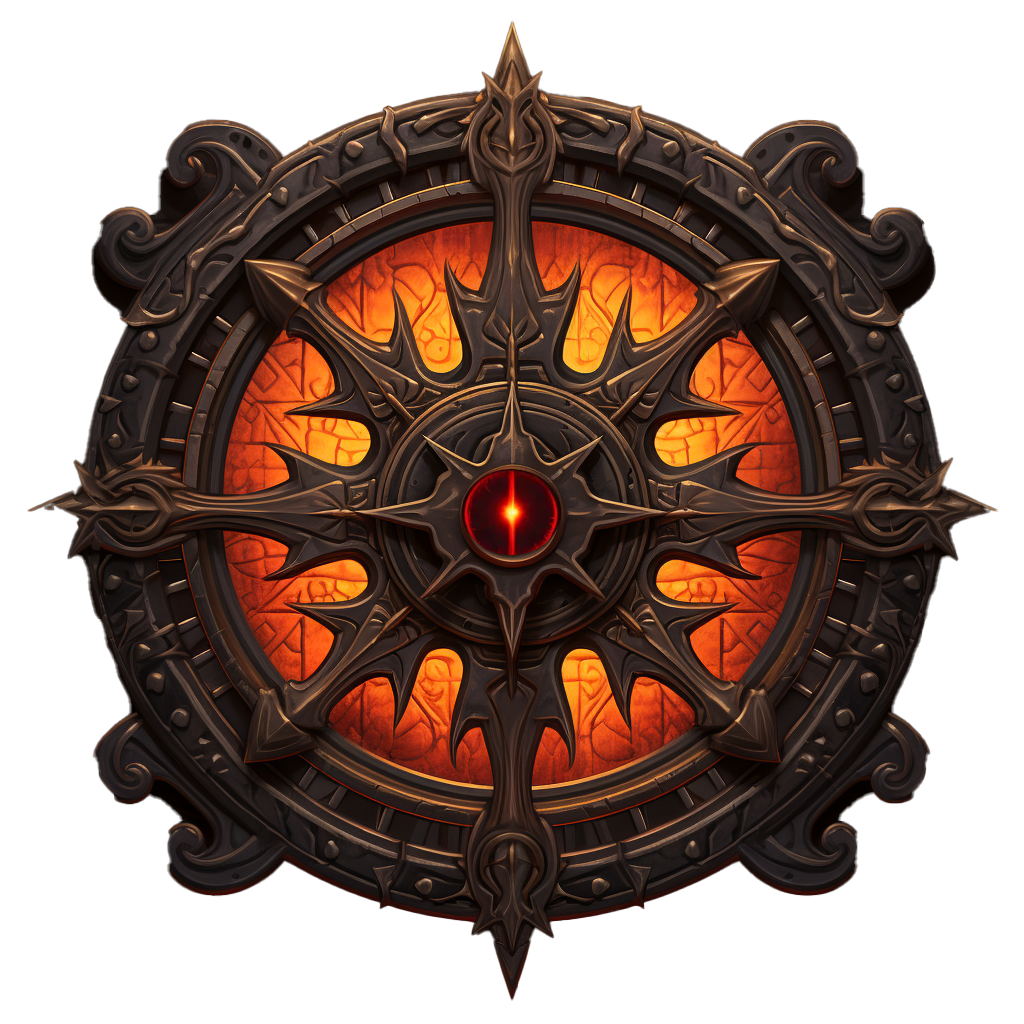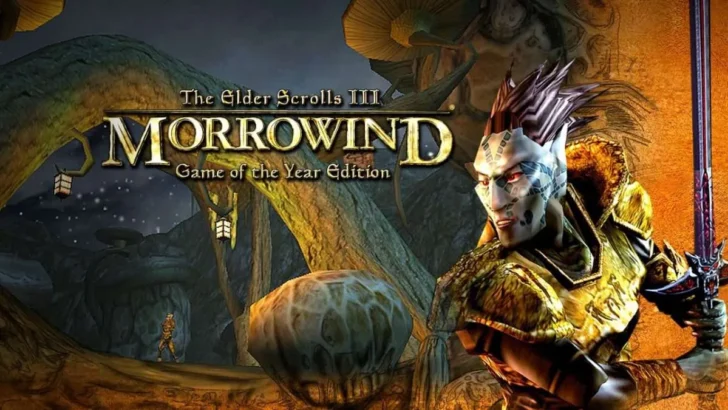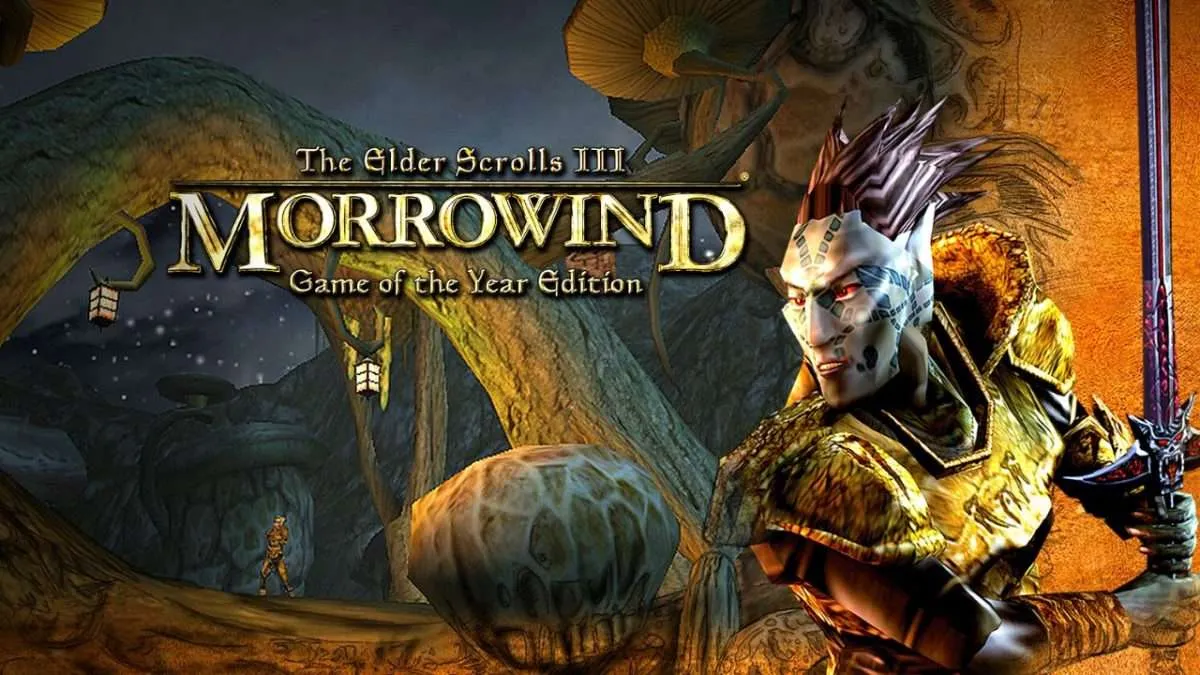The Elder Scrolls III: Morrowind
Pros
- Deep and immersive world building, offering hours of exploration.
- Character progression and class system provide a high degree of customization.
- Integration of multiple cultures and influences creates a unique fantasy setting.
- Comprehensive guild system offering diverse storylines and missions.
- Active modding community provides longevity and freshness to the gameplay.
Cons
- Graphics and combat system might feel dated compared to modern RPGs.
- Some players might find the leveling system grindy and time-consuming.
- The in-depth lore can be overwhelming for new players.
- Limited crafting options in the original game.
- AI and pathfinding issues can sometimes hinder immersion.
The world of gaming was forever changed when Bethesda Game Studios brought forth the third installment in The Elder Scrolls series. ‘The Elder Scrolls III: Morrowind’ first saw the light of day in 2002, quickly setting a high bar for other role-playing games. This dark fantasy adventure, developed and published by Bethesda, immerses players in a vibrant world that still holds charm nearly two decades later.
- Developer: Bethesda Game Studios
- Publisher: Bethesda Softworks
- Release Date: 2002
- Platforms: Microsoft Windows, Xbox
- Official Website: https://elderscrolls.bethesda.net/en/morrowind
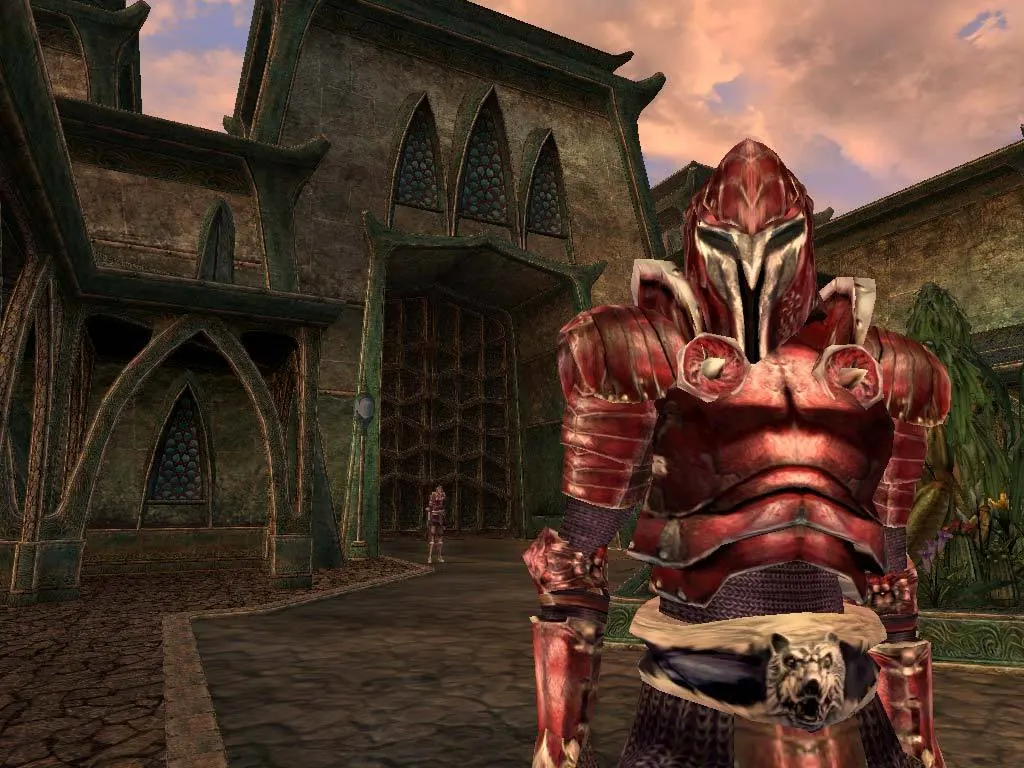
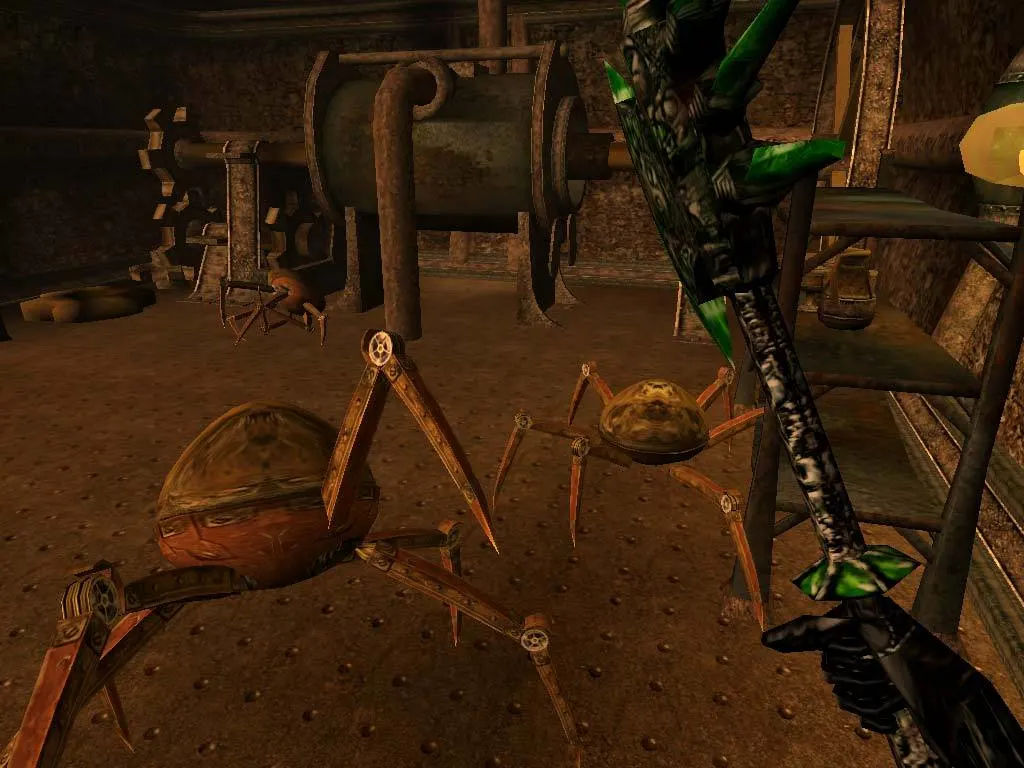
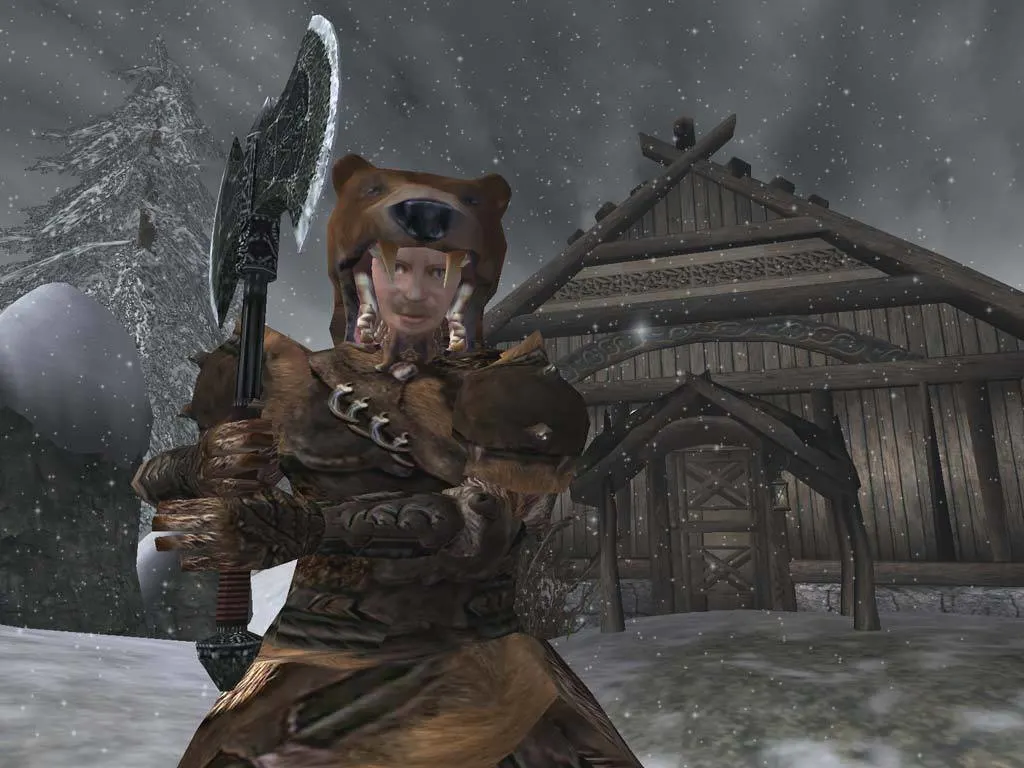
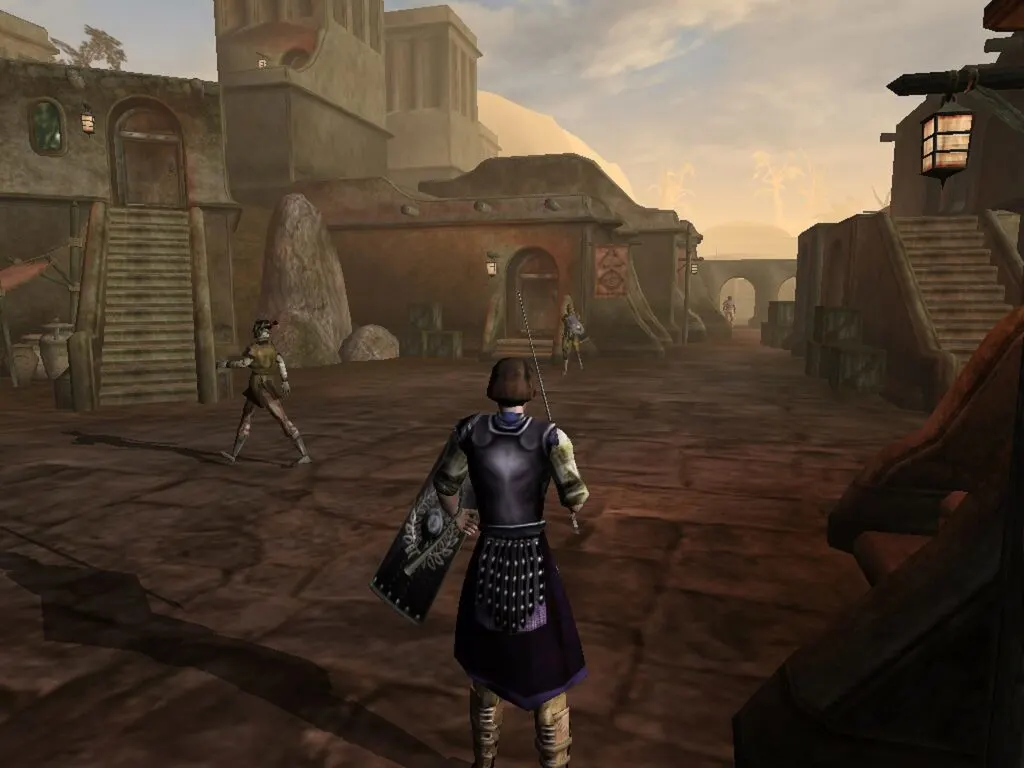
The Legacy of Morrowind
Morrowind’s gameplay strikes an elegant balance between complexity and accessibility, drawing heavily from the timeless Dungeons & Dragons tabletop RPG. From intricate level design to its elaborate lore, Morrowind takes inspiration from Western European mythology, subtly interwoven with elements from East Asian and Middle Eastern cultures, and sprinkled with captivating steampunk details.
Following its successful release, Morrowind was further enriched with two expansions, ‘Tribunal’ and ‘Blood Moon,’ eventually leading to the release of the ‘Morrowind: Game of the Year Edition’ in 2003. Over the years, the game’s modding community has produced myriad third-party mods, enhancing and modernizing the gaming experience.
Journey in Vvardenfell
Morrowind’s adventure begins with the protagonist awakening on a ship, a fellow Dunmer (Dark Elf) named Juib offering the first welcome. It is here that character creation begins, setting the tone for an open-world RPG that places unparalleled freedom in the player’s hands.
Morrowind employs a unique skill progression system, where skills improve through use. Practicing specific abilities or paying in-game trainers are viable ways to boost your proficiency. Reading books, scattered across the world or purchasable from merchants, grants immediate skill increases.
The game presents 21 preset classes, each with a specific skill set, governing attributes, and abilities. These classes cater to a variety of playstyles, from magic-wielders like Mages, Sorcerers, and Witch Hunters to stealth classes like Acrobat, Agent, and Thief, or frontline tanks and damage dealers like Knight, Barbarian, and Warrior.
Crafting and Guilds
Morrowind’s original crafting system is somewhat streamlined compared to later series entries. It focuses primarily on potion brewing, weapon enchantment, and spell creation, although mods have extended this system to include mechanics reminiscent of later Elder Scrolls titles.
The island of Vvardenfell hosts numerous guilds, each offering its own unique opportunities and storylines. Joining guilds is an integral part of Morrowind, allowing you to immerse yourself further in its rich lore and political machinations.
System Requirements
Minimum Requirements
- Memory: 128MB RAM
- Graphics Card: NVIDIA GeForce 4
- CPU: Intel Pentium III 500mhz
- File Size: 1 GB
- OS: Windows 98/2000/XP
Recommended Requirements
- Memory: 256 MB RAM
- Graphics Card: NVIDIA GeForce 2 GTS
- CPU: Intel Pentium III 800mhz
- File Size: 1 GB
- OS: Windows 98/2000/XP
